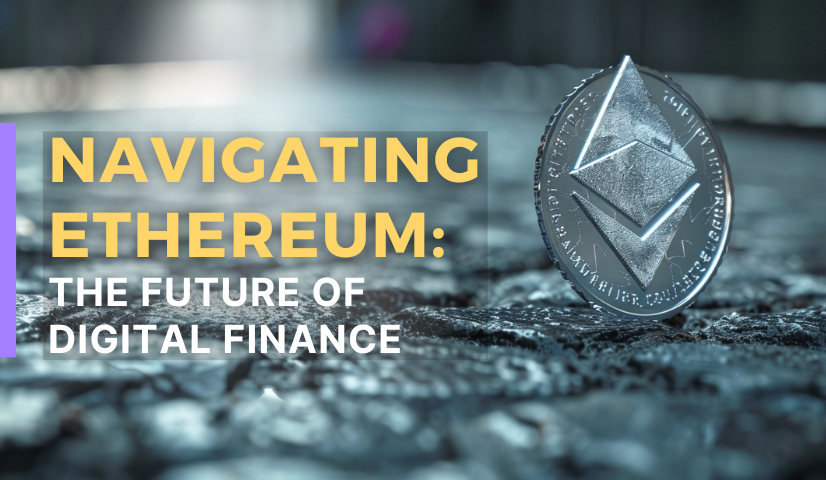
- Ethereum revolutionizes digital finance with smart contracts and dApps, beyond just being a cryptocurrency.
- It's pivotal in the DeFi movement and NFT market, democratizing access to financial services and digital ownership.
- With Ethereum 2.0 and potential ETFs, its future in enhancing scalability, sustainability, and institutional adoption looks bright.
TABLE OF CONTENTS

Ethereum, often hailed as the queen of cryptocurrencies, has cemented its place as a cornerstone in the realm of digital finance. This exploration delves into Ethereum’s core, its multifaceted applications, its significant impact on the digital world, and forecasts its trajectory in the evolving landscape of blockchain technology.
Decoding Ethereum: More Than Just a Cryptocurrency
Ethereum, launched in 2015 by Vitalik Buterin and a team of other co-founders, is a decentralized, open-source blockchain system that features smart contract functionality. It stands out for its unique ability to facilitate the creation and execution of smart contracts and decentralized applications (dApps) without any downtime, fraud, control, or interference from a third party. Ethereum’s native cryptocurrency, Ether (ETH), powers transactions on the network, acting as a fuel for operations and as a store of value.
The Multifaceted Applications of Ethereum: A Digital Ecosystem
Ethereum’s applications are vast and varied, stretching beyond mere financial transactions. It serves as the backbone for decentralized finance (DeFi), enabling lending, borrowing, and trading through peer-to-peer protocols without traditional financial intermediaries. Ethereum also supports the creation of Non-Fungible Tokens (NFTs), representing ownership of unique digital items and assets. Its platform is a breeding ground for innovation, hosting thousands of dApps across various sectors including gaming, social media, and decentralized autonomous organizations (DAOs).
The Revolutionary Impact of Ethereum in the Digital World
Ethereum has significantly influenced the blockchain and cryptocurrency spaces by introducing the concept of programmable transactions. It has democratized access to financial services, contributing to the DeFi revolution, which aims to replicate and improve upon traditional financial services in a permissionless ecosystem. Ethereum’s impact extends to supporting a new wave of digital art and collectibles through NFTs, opening up revenue streams for artists and creators worldwide.
Future Outlook: Ethereum’s Path Towards Scalability and Efficiency
The future of Ethereum looks promising, with the much-anticipated transition to Ethereum 2.0, which aims to improve the network’s scalability, security, and sustainability. This upgrade will see Ethereum move from a proof-of-work to a proof-of-stake consensus mechanism, reducing its environmental impact and increasing transaction speed and efficiency. The prospect of Ethereum ETFs and the growing institutional interest in ETH suggest a bullish outlook for its adoption and price.
Conclusion: Ethereum’s Enduring Legacy and Prospects
Ethereum’s contribution to the blockchain ecosystem is indelible, laying the foundation for a future where decentralized applications and finance are commonplace. Its continuous development and the community’s commitment to innovation ensure that Ethereum remains at the forefront of the digital revolution. As the network evolves, Ethereum is poised to unlock new possibilities, making the digital world more accessible, efficient, and secure.




















